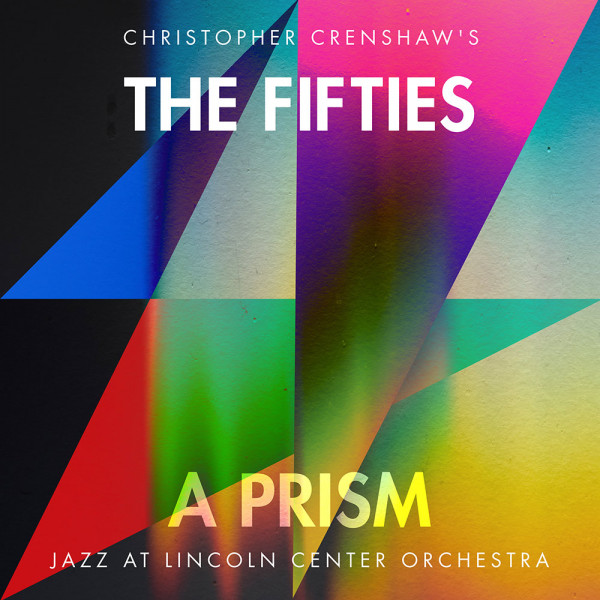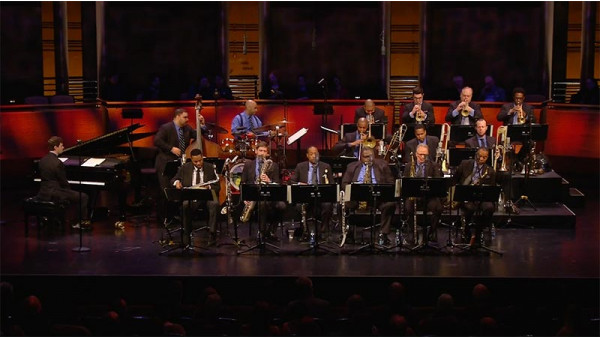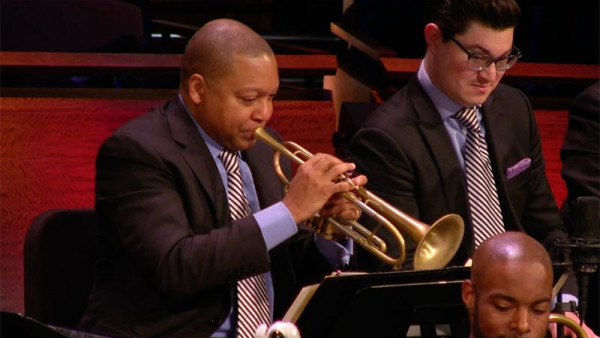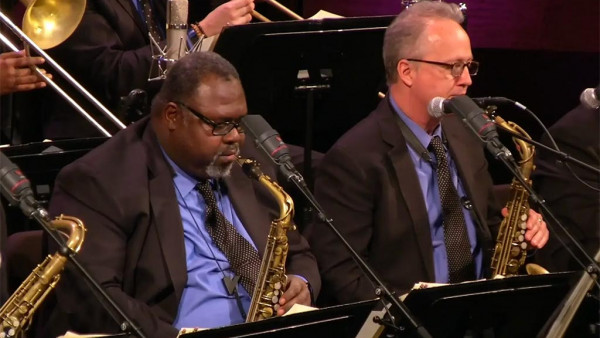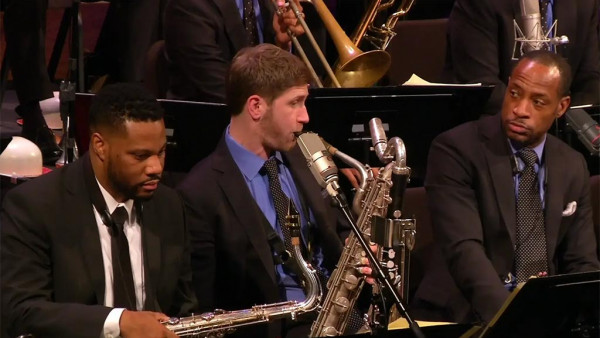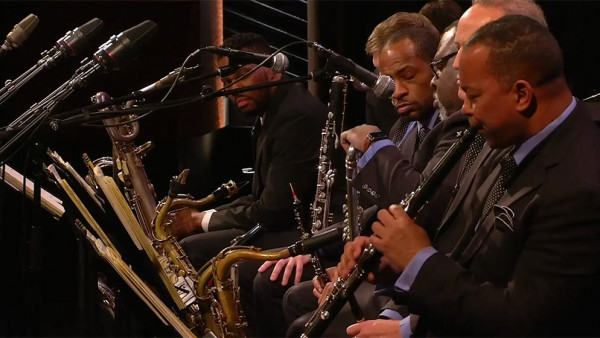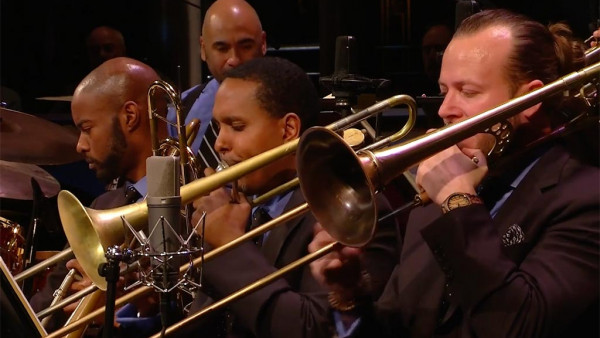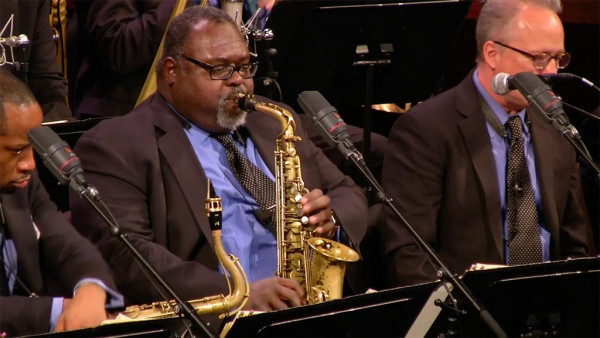REVIEW: Jazz at Lincoln Center Orchestra’s (JLCO) Christopher Crenshaw Composed and Arranged ‘The Fifties: A Prism’
Should you be counting, this is the fourth review in this weird year of 2020 for the Jazz at Lincoln Center Orchestra (JLCO) and their label, Blue Engine Records, which like all but the Wayne Shorter album, are being delivered only digitally. While leader and spokesman Wynton Marsalis deservedly receives most of the accolades and press, the members are supremely talented and, in some cases, take the reins. We saw that with Sherman Irby’s Inferno and now with young trombonist, arranger, and composer Christopher Crenshaw who serves up The Fifties: A Prism, perhaps the most diverse of their four offerings to date this year.
This, like the others, is a live recording and is taken from a February 2017 performance at the JLCO’s home. It’s not a stretch to think that the fifties were the most fertile and maybe the most foundational decade of jazz that we’ve seen. The bebop of the late forties transformed into hard bop, modal, third stream, and we had the beginnings of soul jazz and free jazz as well. This is the era of Miles, Ellington, Mingus, and Ornette Coleman to name a few. Okay, arguably the sixties rival it for diversity and creativity but there’s no doubt that jazz music of the fifties is vital. Consider that 1958’s Kind of Blue by Miles is still the largest selling jazz album by a wide margin. 1956’s Ellington at Newport will also be considered one of Duke’s best. Ornette Coleman’s 1959 The Shape of Jazz to Come and Mingus’ 1956 Pithecanthropus Erectus are considered iconic. We could go on and on.
Here is Crenshaw’s take – “When I was presented with the idea of coming up with a suite dealing with the 1950s, I immediately realized this going to cover the genres of jazz, from bebop to freedom music. The 50s had a mix of the well-established and the up-and-coming musicians and composer to bless this music; if most of them got along, so can we.” Of the six pieces, the three standouts appear in the back half, beginning with the Latin “Cha-Cha Toda la Noche,” in the style of Latin jazz that was popularized by Tito Puente, Tito Rodríguez, and Machito with hints of Ellington in the outstanding solos from Victor Goines (clarinet), Vincent Gardner (trombone), and Carlos Henriquez (bass).
That’s followed by a Gil Evans styled “Unorthodox Sketches,” four statements in the style of Third Stream jazz, a term coined by composer Gunther Schuller to describe a fusion of jazz improvisation and classical music. According to Ted Nash’s liner notes, Crenshaw’s orchestrations utilize a flugelhorn as the lead voice-over bucket-muted trombones sounding much like a French horn section. Harmon-muted trumpets trade-off with the reed section on poignant phrases with Goines leading on the clarinet. Christopher then chooses four woodwinds typically found in the symphonic orchestra to improvise over a modal chord progression, reminiscent of Miles Davis’s Kind of Blue. Goines’s expressive clarinet, *Sherman Irby*’s poetic, soulful alto flute, *Ted Nash*’s piccolo, and *Paul Nedzela*’s clear and confident bass clarinet achieve a fusion of jazz and classical vocabulary.
By far, though (especially for those who think the JLCO just relegates jazz to “the museum) is the concluding ten minute plus “Pursuit of the New Thing,” addressing Ornette Coleman. Below is an account of a live performance of this piece performed in Chicago during that same year, with alto saxophonist Ted Nash taking the voice of Coleman and Wynton Marsalis taking Don Cherry, Coleman’s front line partner.
This is from the Chicago Tribune: “Yes, you could hear the longing blues sensibility that coursed through many of Coleman’s melodic lines and the nonchordal, profoundly linear way of structuring music that defined Coleman’s “harmolodic” methods (a self-styled idiom that was as widely reviled at the time as it is broadly revered today). But Crenshaw extended that philosophy across an orchestral palette, at the same time handing considerable musical responsibility to alto saxophonist Ted Nash and trumpeter Marsalis.
… Nash and Marsalis captured the freewheeling sense of melody-making and stop-start rhythmic elasticity of Coleman’s syntax. The orchestral interruptions and interlocutions added to the elements of surprise, which were ample. So much so that some in the audience applauded more than once for what they understandably believed to be the end of a composition/improvisation that was not yet finished… Perhaps only two musicians who have worked together as long as Marsalis and Nash could have played this cat-and-mouse game so nimbly.” Nash adds in his liner notes, “Wynton and I hold out the last note for what seems like an eternity. We didn’t want to let this performance come to an end, and hopefully neither will you.”
The first three pieces on the album are in the five-six minute range with “Flipped His Lid,” very much influenced by the energetic bebop that emanated from the end of the 1940s yet colored by the cool, linear harmonic movement of Lennie Tristano and Warne Marsh. It features solos from Sherman Irby (alto saxophone), Stantawn Kendrick (tenor) and Dan Nimmer (piano). “Just A-Slidin,’” is in the vein of the hard-bop bands led by Horace Silver, J.J. Johnson and Kai Winding, and Art Blakey, while also being reminiscent of the song “Wabash” from the classic recording Cannonball and Coltrane. It spotlights Crenshaw’s trombone buddies with solos from Gardner and Elliot Mason as well as Ali Jackson on drums. “Conglomerate” features solos from Nedzela (baritone sax), Marsalis (trumpet) Kendrick (tenor), and Carlos Henriquez on bass.
Nash’s notes offer these insights on “Conglomerate.” Crenshaw conjures up the cool West Coast style of Gerry Mulligan and Chet Baker with impeccable contrapuntal writing. He uses the title both as a noun—different parts grouped together without losing their distinct identities—and as a verb: to bring together into a collective. The piano serves the function of a horn in the ensemble passages. Paul Nedzela and Marsalis give us a wonderful taste of the Mulligan/Baker style, improvising in thematically inspired counterpoint. Shantawn Kendrick plays a very relaxed and mature chorus, effectively mixing short melodic statements with longer, flowing eighth-note lines. Bassist Carlos Henriquez ends his playful turn with a whole note rich with anticipation, handing it back to the horns to weave an intricate call-and-response. After a quick reprise of the melody, the piece concludes with a collective, unapologetic smile, rather than the expected fanfare.
Crenshaw has been a JLCO member since 2006. Here’s what Marsalis said about him in 2014, “Crenshaw is sprinkled with magic dust. What is it that he cannot do? First of all, he is thoroughly, absolutely cool at every level. He occupies a very small space with his ego. He has perfect pitch. He can write an unbelievable arrangement in one night. His arrangements and compositions are always so intelligent, pointed, and so well-crafted.” ( taken from the program notes)
Spirited throughout, this is yet another testament to the talents of the ensemble but mostly to Crenshaw for his highly creative compositions and arrangements.
by Jim Hynes
Source: Glide Magazine

